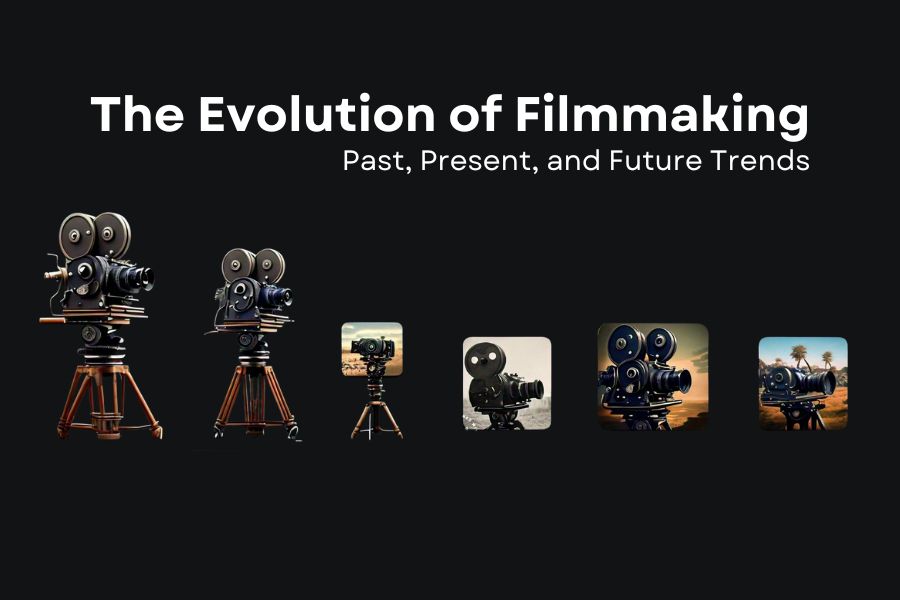Table of Contents
Introduction
Kodak and filmmaking are inseparable. Since the birth of cinema, Kodak has been at the heart of iconic films, serving as the trusted film stock for directors and cinematographers. But what makes Kodak most common film for filmmaking, and why do directors like Jim Cummings filmmaker, Scorsese filmmaking quotes, and Scott Gardner Filmmaker swear by it? Let’s explore the timeless relationship between Kodak and these visionary filmmakers.
Why Kodak Most Common Film for Filmmaking
Kodak has been a staple in the film industry for over a century. Its long-lasting legacy is tied to its high-quality film stocks, vibrant colors, and unparalleled clarity. Whether shooting in natural light or studio setups, Kodak offers superior texture and resolution, making it the go-to choice for filmmakers who want to craft visually stunning stories.
History of Kodak in the Film Industry

Founded in 1888 by George Eastman, Kodak revolutionized photography and filmmaking. The company’s mission was to make film accessible, and it soon became the preferred brand for movie production worldwide. From Hollywood blockbusters to indie films, Kodak film is synonymous with the visual artistry of cinema.
Kodak Film Stock Features
Kodak’s 35mm and 16mm film stocks are praised for their flexibility and dynamic range. They capture every detail, from delicate skin tones to deep shadows, making the films visually rich and immersive. Kodak stocks also offer superior grain structure, which gives films a distinctive cinematic look that digital cameras can’t replicate.
35mm Film Stocks
Kodak Vision3 50D – A classic daylight-balanced color negative film known for its fine grain, wide latitude, and accurate color rendition.
URL: https://www.kodak.com/en/motion/product/camera-films/50d-5203-7203/
Kodak Ektachrome 100 – A tungsten-balanced reversal film that delivers vibrant, saturated colors and exceptional detail.
URL: https://www.alexburkephoto.com/blog/2022/3/14/kodak-e100-pushing-the-limits-of-slide-film
Kodak Tri-X 400 – A black and white film with a classic look, known for its high contrast and versatility.
URL: https://thedarkroom.com/film/tri-x-400/
16mm Film Stocks
Kodak Vision3 500T – A high-speed color negative film designed for low-light shooting, offering excellent image quality and wide latitude.
URL: https://www.kodak.com/en/motion/product/camera-films/500t-5219-7219/
Kodak Double-X 5254 – A black and white film with a fine grain and wide exposure latitude, making it suitable for various applications.
URL: https://www.cinematography.net/edited-pages/FilmsOn5254.htm
Jim Cummings Filmmaker: A Filmmaker’s Journey with Kodak
Who is Jim Cummings?
Jim Cummings is an independent filmmaker who rose to fame with his feature film Thunder Road, which showcased his unique blend of dark humor and poignant drama. Known for his hands-on approach, Cummings is a true auteur who often writes, directs, and stars in his films.
Films Shot on Kodak by Jim Cummings
Cummings has embraced Kodak film for its ability to add a textured, organic feel to his storytelling. Here are a few examples of his films shot on Kodak:
Thunder Road (2018): This critically acclaimed film, both in its short and feature-length versions, was shot primarily on Kodak 16mm film.
The Wolf of Snow Hollow (2020): Another example of Cummings’ use of Kodak film to create a visually striking and emotionally resonant atmosphere.
Techniques Used by Jim Cummings in Filmmaking
Cummings’ filmmaking style often involves:
- Long takes: These extended shots create a sense of immersion and allow for more nuanced performances.
- Handheld shots: This technique adds a raw, documentary-like feel to the footage.
- Kodak film: The use of Kodak film enhances the contrast and depth of the images, making them more visually striking and emotionally impactful.
Scorsese Filmmaking Quotes and Kodak’s Influence
Scorsese’s Cinematic Style
Martin Scorsese, one of the most iconic filmmakers of all time, has always been a vocal advocate for shooting on film.
Examples of Scorsese’s Cinematic Style
Taxi Driver (1976): The gritty, neon-lit streets of New York City are captured in stark contrast, emphasizing the psychological turmoil of the protagonist.
Goodfellas (1990): The film’s iconic opening sequence, shot in long takes, showcases Scorsese’s mastery of composition and editing.
The Irishman (2019): The use of de-aging technology, though cutting-edge, is still rooted in the film’s overall aesthetic, which relies heavily on practical effects and Kodak film.
Famous Quotes on Filmmaking
Scorsese once said, “Cinema is a matter of what’s in the frame and what’s out.” This philosophy, combined with Kodak’s ability to capture both detail and atmosphere, is what makes his films so visually compelling.
Scorsese’s Use of Kodak Film
Scorsese has used Kodak 35mm and 16mm film throughout his career. His dedication to the medium highlights Kodak’s lasting influence on the art of filmmaking, especially in how it captures the grittiness and raw energy of urban environments, which is a staple in many of his films.
Scott Gardner filmmaker Approach to Filmmaking with Kodak
Who is Scott Gardner?
Scott Gardner is an emerging filmmaker who has quickly made a name for himself in the indie film scene. His approach to filmmaking is deeply influenced by traditional film techniques, with a particular love for Kodak film.
Kodak Film in Scott Gardner’s Work
Gardner uses Kodak film to emphasize realism and authenticity in his projects. His films often tackle complex themes, and the use of Kodak gives them a raw, unfiltered aesthetic that resonates with audiences.
Unique Techniques Gardner Brings to Filmmaking
Gardner is known for his use of natural light and his preference for shooting in challenging, unpredictable environments. Kodak’s high dynamic range allows him to capture these settings with precision, ensuring that every detail of the scene is brought to life.
Kodak’s Most Common Film for Filmmaking Techniques

1. Cinematography with Kodak
The versatility of Kodak film lies in its ability to handle a wide range of lighting conditions. From dimly lit interiors to bright outdoor scenes, Kodak ensures consistency in exposure, allowing cinematographers to focus on storytelling.
2. Color Accuracy and Texture
One of the standout features of Kodak film is its color accuracy. Filmmakers love the way Kodak captures natural hues, making skin tones look lifelike and landscapes appear vibrant. The texture of the film, with its fine grain, adds a tangible quality to the images.
3. Handling Light and Shadows
Kodak excels in capturing the interplay between light and shadows. This makes it ideal for directors like Scorsese, who use high-contrast lighting to create mood and tension in their films.
Examples of Iconic Films Shot on Kodak
Kodak has been used in countless legendary films, from The Godfather to Pulp Fiction. More recently, indie filmmakers like Jim Cummings and Scott Gardner have embraced Kodak for its ability to add depth and emotion to their stories.
Conclusion
Kodak’s influence on filmmaking is undeniable. From its early days in cinema to modern indie filmmakers, Kodak has helped shape the visual language of movies. Filmmakers like Jim Cummings, Martin Scorsese, and Scott Gardner continue to choose Kodak for its unique ability to capture the essence of a story, making it the most common film for filmmaking.
Top 10 Best filmmakers in the world 2024: Key Works and Future Projects!
FAQs
1. Why do filmmakers still use Kodak film today?
Kodak offers a unique texture and depth that digital can’t replicate, providing a more authentic and nostalgic look.
2. What is the difference between digital and Kodak film?
Kodak film has a tactile quality, with rich grain and organic color reproduction, while digital offers sharper, cleaner images.
3. How does Kodak film affect the final look of a movie?
Kodak enhances colors, provides better depth in shadows, and creates a cinematic texture that elevates the overall visual experience.
4. What are the famous quotes from Scorsese about filmmaking?
Scorsese often emphasizes the importance of framing and visual storytelling, with quotes like, “Cinema is a matter of what’s in the frame and what’s out.”
5. Are Jim Cummings and Scott Gardner prominent figures in independent filmmaking?
Yes, both are influential indie filmmakers known for their innovative use of Kodak film to create emotional, impactful films.

